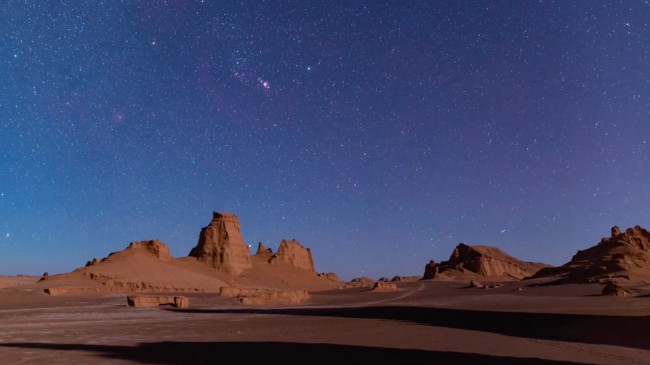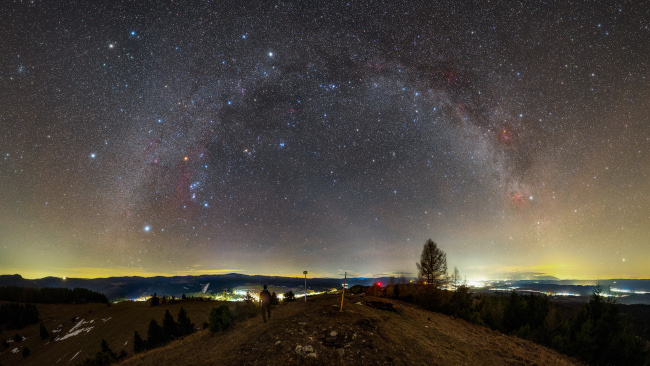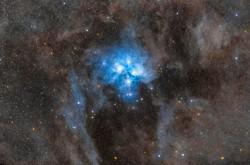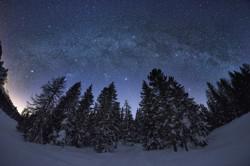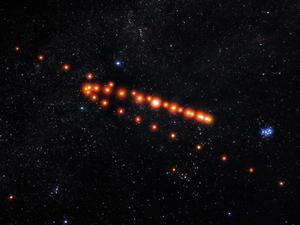Glossary term: Pleiades
Description: The Pleiades is a cluster of stars in the constellation of Taurus. An open cluster of over a thousand stars, the Pleiades is about 440 light years from Earth. The Pleiades is relatively young by astronomical standards with an age estimated to be within 70–150 million years. Between six and nine members of the Pleiades are visible with the naked eye under most conditions.
As a prominent stellar cluster the Pleiades has a wealth of mythology and folklore associated with it from cultures across the globe. Its first appearance in the morning sky is an important marker in the calendars of several societies, including signaling the Māori New Year. The name "Pleiades" comes from the Greek legend associated with the cluster.
Related Terms:
See this term in other languages
Term and definition status: This term and its definition have been approved by a research astronomer and a teacher
The OAE Multilingual Glossary is a project of the IAU Office of Astronomy for Education (OAE) in collaboration with the IAU Office of Astronomy Outreach (OAO). The terms and definitions were chosen, written and reviewed by a collective effort from the OAE, the OAE Centers and Nodes, the OAE National Astronomy Education Coordinators (NAECs) and other volunteers. You can find a full list of credits here. All glossary terms and their definitions are released under a Creative Commons CC BY-4.0 license and should be credited to "IAU OAE".
Related Media
Winter Constellations
Credit: Amirreza Kamkar/IAU OAE
License: CC-BY-4.0 Creative Commons Attribution 4.0 International (CC BY 4.0) icons
Warm Winter Night Over Spiš Region
Credit: Robert Barsa/IAU OAE
License: CC-BY-4.0 Creative Commons Attribution 4.0 International (CC BY 4.0) icons
Moon-Mercury-Pleiades Conjunction
Credit: Giulio Colombo/ IAU OAE
License: CC-BY-4.0 Creative Commons Attribution 4.0 International (CC BY 4.0) icons
The Pleiades M45 with Majestic Dust
Credit: Mohamed Usama/IAU OAE
License: CC-BY-4.0 Creative Commons Attribution 4.0 International (CC BY 4.0) icons
Romanian Orion
Credit: Alex Conu/IAU OAE
License: CC-BY-4.0 Creative Commons Attribution 4.0 International (CC BY 4.0) icons
Winter Milky Way
Credit: Giorgia Hofer/IAU OAE
License: CC-BY-4.0 Creative Commons Attribution 4.0 International (CC BY 4.0) icons
Retrograde Motion of Mars
Credit: Rob Kerby Guevarra/IAU OAE (CC BY 4.0)
License: CC-BY-4.0 Creative Commons Attribution 4.0 International (CC BY 4.0) icons
